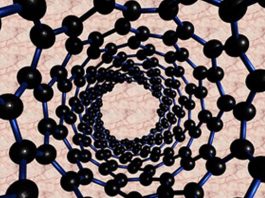Researchers at Graz University of Technology and the University of Graz, along with experts from France, have visualised the electromagnetic fields of nanostructures in 3D.
In research that could accelerate the development of new, efficient nanotechnologies, scientists have succeeded in imaging surface phonons in three dimensions for the first time.
The results that have been published in ScienceMag.
Many advanced technological applications, such as microscopy, data storage, and sensor technology, that need precise functions, depend on the structure of the electromagnetic field near the surfaces of material.
In nanosystems, ‘surface phonons’ – temporal distortions of the atomic lattice – fundamentally contribute to the physical and thermodynamic properties.
If these surface phonons could be manipulated, it would be possible to attain better thermal conduction or heat transfer among components with nanosurfaces. This could be applied to detectors, sensors or in highly efficient passive cooling systems.
As well as this, surface phonons focus electromagnetic energy spectrally into the far infra-red range. This could lead to the capability for super-resolution lenses, improved vibrational spectroscopy, and other applications.
However, there is still a lot to be explored in this area. In order to develop new nanotechnologies, this field of solid-state physics must be visible on the nanometre scale.
Gerald Kothleitner, head of the Institute of Electron Microscopy and Nanoanalysis at Graz University of Technology, explained: “Visualising these local fields is the starting point for a deeper understanding of the fundamentals and for better design of nanostructures.
“Electron microscopes powerful enough to even register the relatively low energy of phonons were only developed a few years ago. To date, however, they could only be measured inadequately, at best in two dimensions.”
Gerald Kothleitner, Institute of Physics at the University of Graz, corresponding author of the study, said: “We excited these lattice vibrations with an electron beam, measured them with special spectroscopic methods, and then reconstructed them tomographically. As a result, the infra-red light fields generated by the surface phonons of a magnesium oxide nanocube became visible in three dimensions for the first time, and the spatial distribution was discernible. In particular, this also allowed us to image the sites with high field enhancements and the resulting strong interactions of certain phonons with the environment.”
Ulrich Hohenester, also of the Institute of Physics at the University of Graz, added: “A 3D reconstruction of the object can be created from many composite 2D projections.
“As on a violin or guitar, the vibrations on the surface of the nanocube are broken down into a series of resonances. These modes are then chosen to obtain the best possible agreement with the experimental data.”
The idea of 3D imaging of phonons was developed by Gerald Kothleitner in collaboration with Orsay during project planning for a pan-European project called ESTEEM 3, which is electron microscopy techniques.
This success in completing the first comprehensive evaluation and 3D representation of electromagnetic fields, can be attributed to the close co-operation of TU Graz and the University of Graz in the framework of NAWI Graz.









